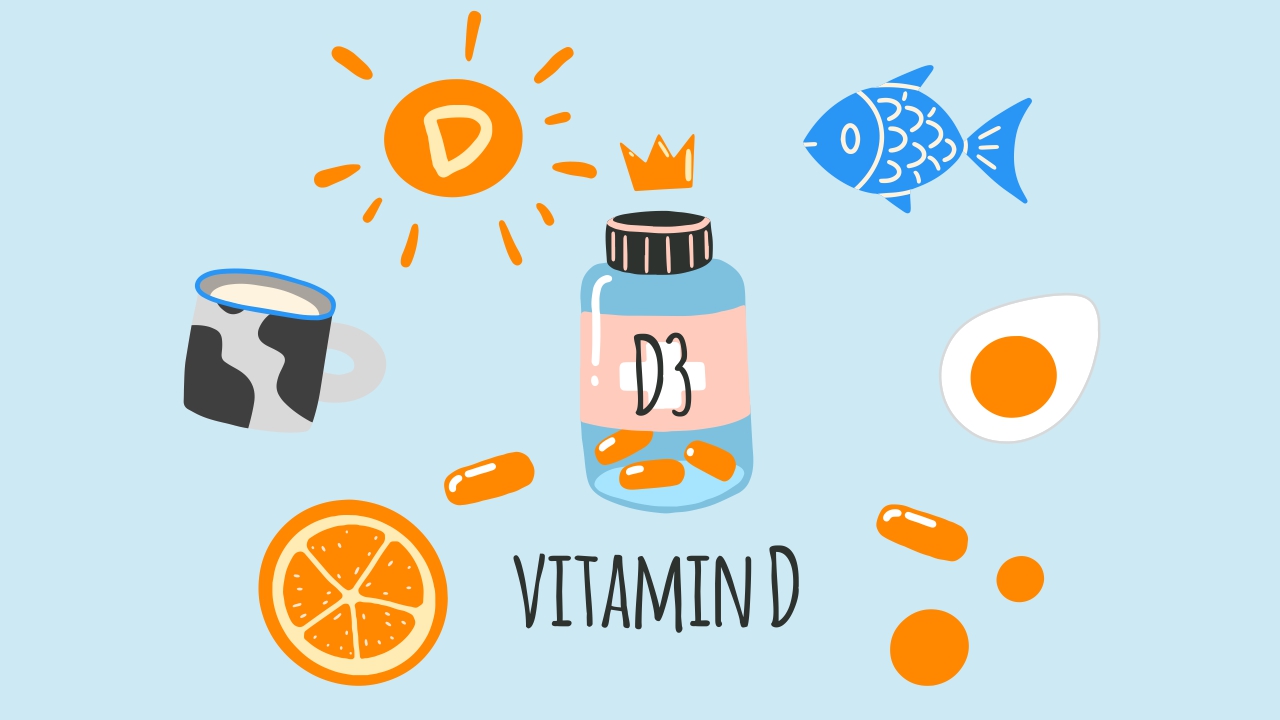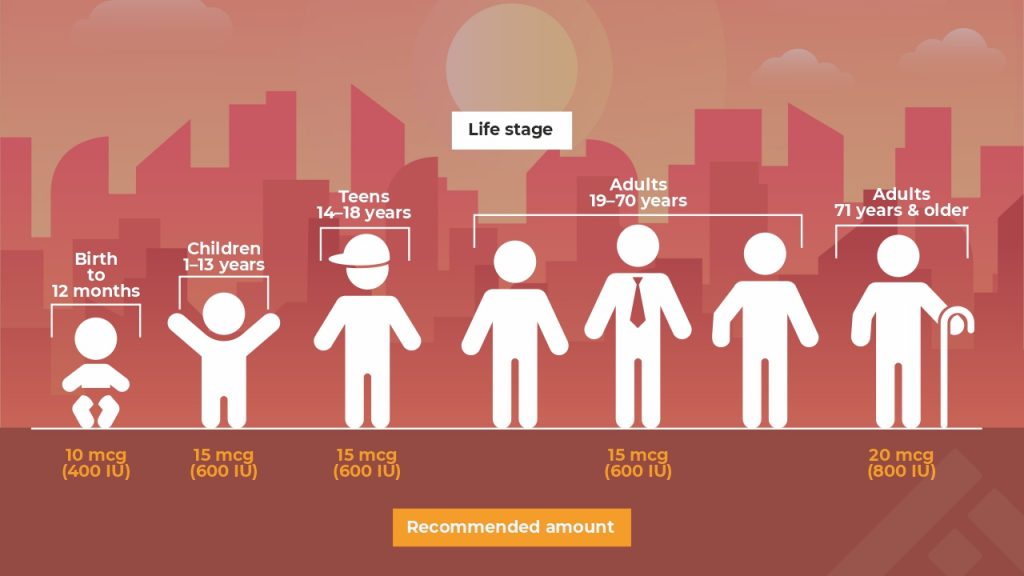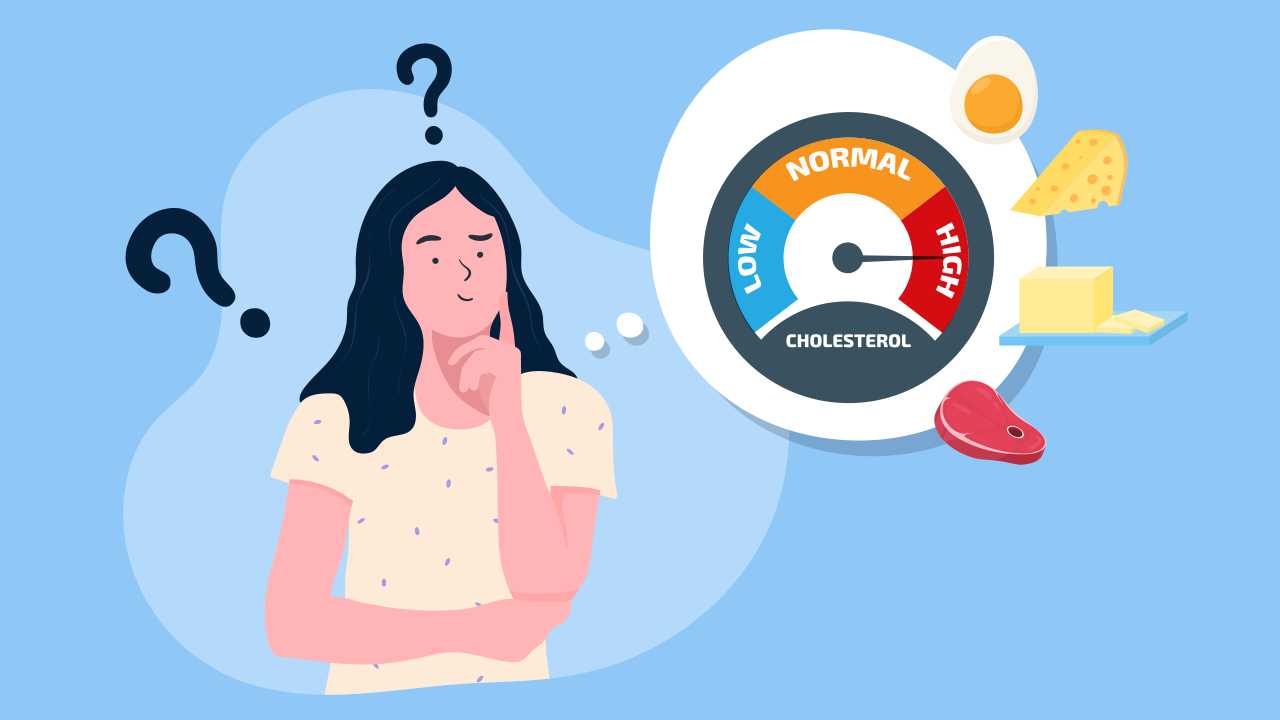
Vitamin D: Role, Sources, and Deficiency

Have you been experiencing fatigue regularly, falling sick, or having pain in your bones? These symptoms may be hinting towards a vitamin D deficiency. Often overlooked, vitamin D is responsible for a number of important functions for good health. Let’s find out more about the role vitamin D plays in our body.
What is vitamin D?
Vitamin D is a crucial nutrient, which is responsible for many functions in the body. The role of vitamin D in the body includes bone strength, immunity, and heart health. Nearly all cells in our body have a receptor for this vitamin.
Unfortunately, vitamin D deficiency is very common, and affects about 1 billion people worldwide. This deficiency is even worse in India, where about 80 to 90% of the population is deficient.
What are the benefits of vitamin D?
The main role of vitamin D in your body is to regulate the calcium and phosphorus balance, which is required for bone mineralization. It also helps in calcium absorption; so, a vitamin D deficiency leads to less calcium absorption, causing weak and brittle bones. The benefits of vitamin D can’t be emphasized more.
Long-term vitamin D deficiency in adults may cause major health issues such as osteomalacia, osteoporosis, muscle weakness, and increased risk of falls. It could also negatively impact your immunity, heart health, blood sugar control, and cancer-fighting ability.
Besides the role of vitamin D in calcium metabolism, it also plays an important role in immune function.
How is the active form vitamin D made in your body?
You mainly get vitamin D from sun exposure (ultraviolet rays of the sun) and foods that are rich in the nutrient. Both these sources give us inactive forms of vitamin D, which are then converted in the body to vitamin D3, the active form. This active form is used by our body for various important functions.
It is advised to get approximately 5 to 30 minutes of sun exposure between 10am and 4pm, preferably daily, or 2-3 times a week. This has to be on the face, arms, hands, and legs without sunscreen on, in order to initiate vitamin D production from sun exposure.
Causes of vitamin D deficiency
Several factors are responsible for the high prevalence of vitamin D deficiency.
1. Indoor lifestyle: We are spending a lot of time indoors, due to our urban lifestyles and desk jobs, causing us to have very limited sun exposure.
2. More pollution levels: With increasing air pollution, the ultraviolet rays of the sun are not able to work efficiently the body.
3. Inadequate intake through food: Very few foods naturally contain vitamin D. Also, vitamin D is fat-soluble; it needs fats to be absorbed by your body. Hence, if you aren’t eating enough fats as well as vitamin D-rich food, your body won’t be able to absorb enough of it.
4. Increased use of sunscreen lotions: It is important to protect our skin against damage caused by ultraviolet rays. But, excessive use of sunscreen prevents the formation of vitamin D in the skin via sun exposure.
5. Skin color: People with darker skin are more likely to develop this deficiency.
6. Use of covered clothing: People who wear covered clothing regularly get less sun exposure, and hence, can’t synthesize vitamin D.
Signs of vitamin D deficiency
Vitamin D deficiency often remains undetected, and therefore, untreated. However, you could look out for certain signs and symptoms. These include:
- Low immunity (falling sick often),
- Tiredness
- Lower back pain
- Slow wound healing
- Bone loss
- Hair loss
- Muscle pain
- Mood disorders (anxiety and depression)
If you suspect that you might be deficient in vitamin D, consult your doctor. He/she will prescribe a blood test to find out if your vitamin D levels are okay. If you turn out to be deficient, your doctor will help you manage it with the right combination of foods, supplements, and lifestyle changes, as needed.
How much vitamin D should you consume?

In case of vitamin D deficiency, you will be recommended either a monthly, weekly, or daily dose. For someone with extreme deficiency, they may be recommended to take a bolus dose of 300,000 International Units (IU) initially, to get to sufficient levels, although what will maintain steady state serum vitamin D levels is a 50,000 IU once a week for 6 to 8 weeks.
In order to prevent recurrence, a frequent administration of 600-1000 IU is recommended in case of low sun exposure.
Once you have attained the optimal range, you must maintain your vitamin D levels by following the daily recommended intake. The daily recommended intake for vitamin D is 400–800 IU, depending on your age.
Also watch: Do runners need to take vitamin D supplements?
How to maintain vitamin D levels

1. Take a 30-minute walk in the mid-morning sun or mid evening sun to allow your body to make vitamin D.
2. Consult your doctor and take regular vitamin D supplements, if required
3. Get your vitamin D levels tested at least once a year
4. Read food labels carefully to eat vitamin D-rich foods like fish, liver, sun-exposed mushrooms, cod-liver oil, red meat, milk as well as fortified foods.
References
1. Michael FH. Vitamin D deficiency. N Engl J Med 2007; 357: 266–81.
2. Natasja MVS, Paul L. Worldwide Vitamin D status. Best Pract Res Clin Endocrinol Metab 2011; 25: 671–80.
3. P Aparna, S Muthathal, Baridalyne N, et al. Vitamin D deficiency in India. J Family Med Prim Care 2018; 7: 324–30.
4. Vitamin D Deficiency. Medline Plus. https://medlineplus.gov/vitaminddeficiency.html (accessed Mar 1, 2021).
5. Marcinowska-Suchowierska E, Kupisz-Urbańska M, Łukaszkiewicz J, et al. Vitamin D toxicity – A clinical perspective. Front Endocrinol (Lausanne) 2018: 9: 550.
6. Dietary guidelines for Indians – A Manual. Hyderabad: National Institute of Nutrition, 2011.
7. National Institute of Health. Vitamin D. Fact sheet for health professionals. https://ods.od.nih.gov/factsheets/VitaminD-HealthProfessional/ (accessed Feb 28, 2021).
8. Lhamo Y, Chugh PK, Tripathi CD. Vitamin D Supplements in the Indian Market. Indian J Pharm Sci 2016; 78: 41–7.














